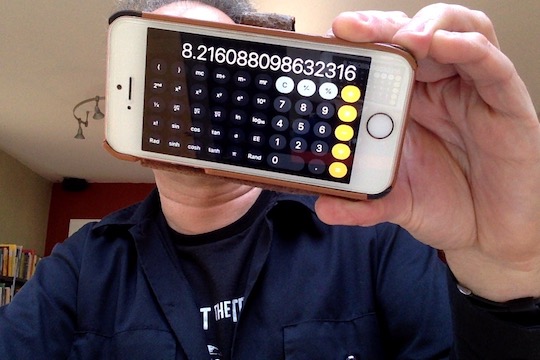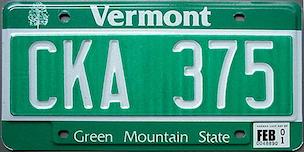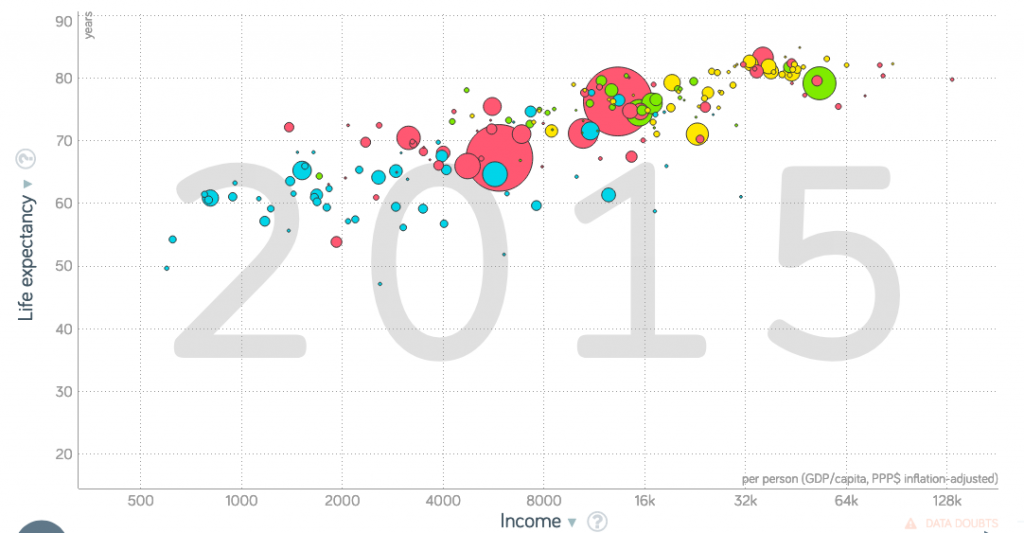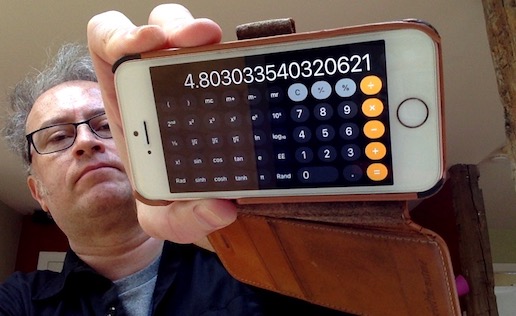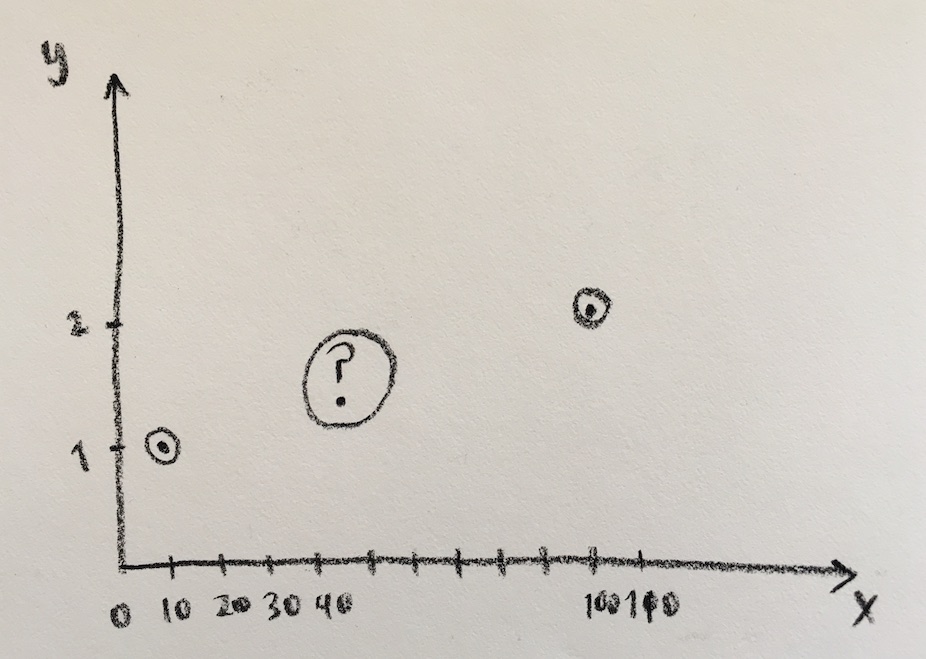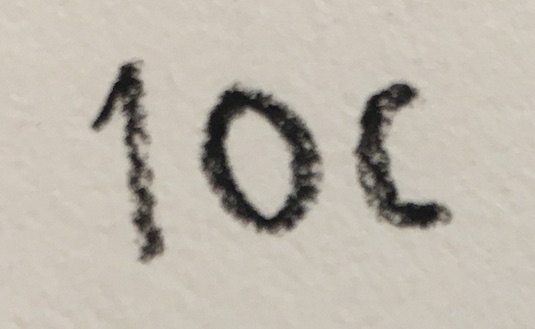Hmm, my titles are getting longer.
In this lecture, I want to take a different viewpoint on the definition and purpose of logarithms. In this point of view, the point of a logarithm is that it is the inverse operation of taking a power. (That statement isn’t exactly right—I’ll fix it as we go along—but that is the general idea.)
The “practical” part of my title means that I’ll focus on how this allows you to work with and solve equations involving powers. Later (if I don’t get exhausted first), I’ll come back and look at inverse operations a little more theoretically.
This version is the most common introduction to logarithms nowadays. If you did logs in high school, this is the version you most likely saw.
Inverting exponentials
So, how does this work? Let me go back to the counting zeroes. If we say that, for example, log(1,000) = 3, we are saying that 1,000 has 3 zeroes. Stated differently, ![]() : the number 1,000 consists of 3 factors of 10. That is:
: the number 1,000 consists of 3 factors of 10. That is:
log(1,000) = 3 means ![]() .
.
The logic is reversible:
![]() means log(1,000) = 3.
means log(1,000) = 3.
As we’ve seen, we can extend this logic to numbers that are not whole. For example, ![]() means
means ![]() , and
, and ![]() means
means ![]() . Or, doing things exactly:
. Or, doing things exactly:
![]() means
means ![]() , and
, and
![]() means
means ![]() .
.
So, for any positive number x,
log (x) = y means ![]() .
.
(Reread this, comparing it to the numerical examples above, and make up some more numerical examples, until you feel confident you understand it. It’s easy to get the x and y mixed up here.)
The logic is reversible:
![]() means log (x) = y.
means log (x) = y.
Usually in this second version, people tend to switch the x and y, because the habit is to think of x as the input of a function, and y as the output.
So, to summarize: for any positive number x:
y= log (x) means ![]() ; (1)
; (1)
and, for any number x:
![]() means x = log (y) (2)
means x = log (y) (2)
We can state these principles in a slightly different way. In principle (1), if y=log(x) means that ![]() , then I can just substitute y = log x into
, then I can just substitute y = log x into ![]() . That means, for any positive number x:
. That means, for any positive number x:
![]() (3)
(3)
Similarly, I can rewrite principle (2) to say, for any number x,
![]() (4)
(4)
Think about what those mean for a moment. In (3), let’s take x = 1,000. Then (3) is saying ![]() . For any number x, the number log(x) is “how many zeroes are in x”; then doing
. For any number x, the number log(x) is “how many zeroes are in x”; then doing ![]() is making a number with exactly that many zeroes, which is just x!
is making a number with exactly that many zeroes, which is just x!
Problem 1: Think through principle (4) in the same way.
Principles (1) and (2) say that the functions ![]() and
and ![]() are inverse functions; we get one by switching the inputs and outputs of the other. Principles (3) and (4) say that the operations of taking the log(something) and of taking 10^(something) are inverses of each other; they cancel each other out.
are inverse functions; we get one by switching the inputs and outputs of the other. Principles (3) and (4) say that the operations of taking the log(something) and of taking 10^(something) are inverses of each other; they cancel each other out.
In most introductory textbooks I have seen, the book uses principles (1) and (2). I prefer principles (3) and (4), for reasons you’ll see below. They are completely logically equivalent, just a slightly different way of writing and thinking about them.
Different logical orderings
I have started with my idea of “counting the zeroes”; I derived the multiplication principle from that:
log(a x b) = log a + log b (M)
Then, from (M), I derived rules for division and for exponents:
![]() (D)
(D)
![]() (E)
(E)
Then, in this section, I derived the inverse principles, (1), (2), (3), and (4). (I haven’t really proved everything precisely, but it is possible to do so.)
One can do this in different orders. In Version 3 that we are doing here (which is the usual high school approach), I would start by assuming principles (1) and (2) as defining the logarithm. Then I would derive (3) and (4), and I would derive (M), (D), and (E) as consequences of (1) and (2). Finally, I would interpret the logarithm as “counting the zeroes”.
(I’m not being 100 per cent precise here. For example, I never gave a strict mathematical definition of “counting the zeroes”. And I need to make some assumptions about exponentiation. But it is possible to make all this totally precise, along the lines I’m describing.)
Which thing you start with is a matter of taste and of pedagogical strategy.
Wherever you choose to start, though, it is helpful to be able to switch between the different perspectives on logs, depending on what you are using them for. There isn’t one version that is objectively better than the others.
Solving equations
This version of logarithms is particularly helpful in solving equations that involve exponents.
Example: Let’s say we know that t is a number such that
![]() .
.
I want to solve this equation for t. (Equations like this come up a lot in applications. I’ll give examples in the next lecture.) What I do is take log of both sides (since the two sides are equal numbers, their logs must also be equal):
![]()
![]() (by (M))
(by (M))
![]() (by (4))
(by (4))
![]() (subtracting log(3) from both sides)
(subtracting log(3) from both sides)
![]() (multiplying both sides by 3.55)
(multiplying both sides by 3.55)
![]() (I’m estimating in my head, you can use a calculator for more accuracy)
(I’m estimating in my head, you can use a calculator for more accuracy)
Another example: Note that the power doesn’t have to be of 10 for this to work, because we can alway use property (E), no matter what the base is. Let’s say we know
![]() ,
,
and we want to solve for t. We could use logs base 2 here, but base 10 logs work just as well. (Either base 10 or base e logs are preferable, because those are the ones on the calculator.) Proceeding as before:
![]() (taking logs of both sides)
(taking logs of both sides)
![]() (by (M))
(by (M))
![]() (by (4)),
(by (4)),
and from there it goes very similarly to before. (You should find ![]() .)
.)
Problem 2: Solve the equation ![]() for the unknown x.
for the unknown x.
Problem 3: Solve the equation ![]() for the unknown t.
for the unknown t.
Problem 4: Suppose that ![]() ,
, ![]() , and
, and ![]() are some known quantities. Suppose we know the equation
are some known quantities. Suppose we know the equation ![]() holds. Solve this equation for t. (Your answer should be a formula for t, which will depend on
holds. Solve this equation for t. (Your answer should be a formula for t, which will depend on ![]() ,
, ![]() , and
, and ![]() . This equation comes up in applications.)
. This equation comes up in applications.)
If we have equations where we need to get the variable out of a log, we can solve them in an opposite way, by taking ![]() of both sides.
of both sides.
Example: Suppose that we know ![]() . I want to solve this for the unknown x. I start by using regular algebra to solve for the log x:
. I want to solve this for the unknown x. I start by using regular algebra to solve for the log x:
![]()
![]()
![]()
and then I take ![]() of both sides:
of both sides:
![]() ,
,
that is,
![]() .
.
Finally, using (3), I can conclude that ![]() .
.
Problem 5: Suppose that ![]() ,
, ![]() , and
, and ![]() are known numbers, and suppose we know that the equation
are known numbers, and suppose we know that the equation ![]() is true. Solve this equation for the unknown x. (Your answer should be a formula for x, which involves the
is true. Solve this equation for the unknown x. (Your answer should be a formula for x, which involves the ![]() ,
, ![]() , and
, and ![]() .)
.)
Graphs
I am now in a position to be more precise about what I said about graphs earlier. Let’s say we have an exponential function. I’ll start with an easy one, then make it more complicated.
Let’s say we the equation ![]() . Now, instead of graphing y, I am going to graph the values of
. Now, instead of graphing y, I am going to graph the values of ![]() . Let’s give this new variable a name; say
. Let’s give this new variable a name; say ![]() . Taking logs of both sides of
. Taking logs of both sides of ![]() , I get
, I get
![]()
![]() (by (E))
(by (E))
![]() , where z stands for log y, and m stands for log 2.
, where z stands for log y, and m stands for log 2.
This means, when I start with ![]() , and I instead graph log y versus x, I get a straight line, going through the origin, with slope 2.
, and I instead graph log y versus x, I get a straight line, going through the origin, with slope 2.
In applications, we are often using different letters, so don’t let that throw you off. For example, suppose we start with 1 cell, and that cells divide once every hour. Then, after t hours, the number N of cells we have is
![]() .
.
Taking logs of both sides, and simplifying as before, we find
![]() .
.
This means that, if we graph t on the horizontal axis, and log N on the vertical axis, we get a straight line, going through the origin, with slope log 2.
Problem 6: Suppose we have the function ![]() , where a, b, and c are some constants, x is the input, and y is the output. Convert this to an equation for log y as a function of x. Simplify as much as possible. Then, describe what the graph will look like. Be as specific as you can: for example, if it is a straight line, say what its slope and y-intercept will be. (Your answers will be formulas depending on the constants a, b, and c.)
, where a, b, and c are some constants, x is the input, and y is the output. Convert this to an equation for log y as a function of x. Simplify as much as possible. Then, describe what the graph will look like. Be as specific as you can: for example, if it is a straight line, say what its slope and y-intercept will be. (Your answers will be formulas depending on the constants a, b, and c.)
Problem 7: Suppose we have a number of individuals N which depends on time t. The number of individuals is growing exponentially, with a doubling time ![]() . We start with
. We start with ![]() individuals, at the initial time
individuals, at the initial time ![]() .
.
a. Try to convince yourself that the following equation for ![]() is true:
is true:
![]() .
.
(It might help, as you are trying to think it through, to put in specific numbers for ![]() ,
, ![]() , and
, and ![]() .)
.)
b. Transform this equation, to get a formula for log N as a function of time t. (If you picked particular numbers for ![]() ,
, ![]() , and
, and ![]() in the previous part, for this part I would like to revert them back to unspecified constants. So your formula for log N will involve the
in the previous part, for this part I would like to revert them back to unspecified constants. So your formula for log N will involve the ![]() ,
, ![]() , and
, and ![]() .)
.)
c. Describe what the graph of log N versus t is going to look like. Be as specific as you can.
Logs of negatives
I have said earlier that, if we take either counting zeroes, or property (M), as our defining property of logs, then it makes perfectly good sense to take the log of a negative number: since (-1)(-1)=1, we have
log((-1)(-1)) = log(1),
so log(-1) + log(-1)=0
so log(-1)=0.
This implies that, for any non-zero number x, log(-x) = log(x), because log(-x) = log ((-1)x) = log(-1) + log x = 0 + log(x) = log(x).
On the other hand, if we take (1) and (2) as our defining property of logs, then logs of negative numbers make no sense at all. Suppose that log(-1) existed. Let’s give it a name, say y = log(-1). Then, by property (1), this would imply
![]() .
.
If you think about this a bit, this is troubling. The number 10 to a positive whole number can’t give a negative answer. If you raise 10 to a fraction, you are taking roots, and roots by definition are positive. If you raise 10 to a negative power, you are getting a fraction, with a power of 10 in the denominator—still positive. There is no way I can solve this equation for y.
This is why people commonly say that logs of negative numbers are undefined. And this is the standard definition today for log: that log x is only defined for strictly positive numbers x (i.e. x cannot be negative or zero).
(But things change if we allow complex numbers… That allows for logs of negatives, but it gives us a different answer than what I’ve said above. And it gives us a whole other perspective on logs. I probably won’t have time to get to this, but I’ll try to at least give hints and references in the final lectures.)
Sometimes, though, we would like to have our Version 1 of logs: sometimes it makes most sense to follow the reasoning above, and say log(-1) = 0, so log(-x) = log(x) for all non-zero x. It depends what we are using the logs for. If we are in such a situation, we can write that version of the log as
![]() .
.
The absolute value bars around x have the effect of stripping off any negative sign: if x is negative, then by definition |x| is positive (with the same magnitude), so log|-x|=log|x|, and |x| is positive, so your high school math teacher will not feel troubled by a disturbance in the Force. We’ll see later that log |x| is the right version for calculus applications, for example.
Plans for next lectures
Next time, I’ll give some examples of applications! Now that we can solve equations involving exponentials and logs, I will be able to be more detailed than I could have been earlier.
My plans after that:
- Applications
- Version 3b: Logarithms as inverses of exponentials (abstract approach)
- Version 4: Logarithms as a missing function in calculus (and why e)
- How computers calculate logarithms
- Version 5: The modern math version: logarithms as an “isomorphism”
- Looking forward: infinite series, complex numbers…
I won’t be expecting you to do the problems for these, because we are nearly out of time for this class. (I also don’t know if I’m going to run out of energy before finishing all this! I will do my best.) I would like you to have this material, though, because I think these topics are all interesting parts of the story.
OK, I will see you all in class on Friday, and I’ll let you know when I get these next parts posted!









